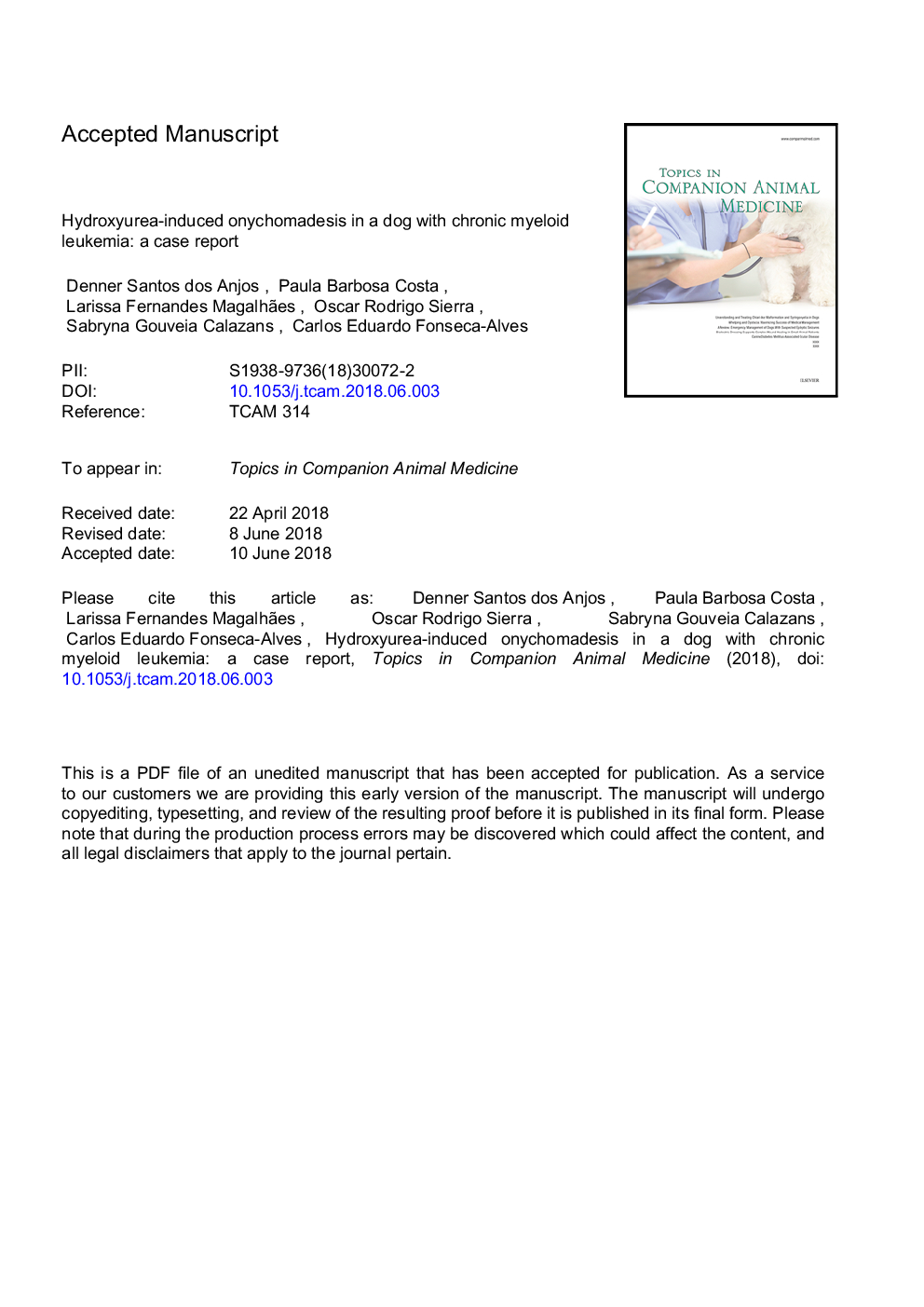| Article ID | Journal | Published Year | Pages | File Type |
|---|---|---|---|---|
| 8943928 | Topics in Companion Animal Medicine | 2018 | 11 Pages |
Abstract
A 12-year-old Rottweiler dog was presented with a history of prostration, weight loss and hyporexia for six months. Based on complete blood tests (hematological and biochemical analyses), bone marrow examination and imaging analysis, a diagnosis of chronic myeloid leukemia was made. Treatment with hydroxyurea at a dosage of 18â¯mg/kg twice daily was not effective in controlling the high count of white blood cells. Furthermore, after 35 days of hydroxyurea treatment, the animal developed onycholysis, with sloughing of the claws of the left pelvic and left thoracic limbs and exposure of the distal phalanx. Interruption of the medication was implemented, with clinical healing of the ungual lesions observed three months after initiation of the drug. White blood cells returned to normal after using cyclophosphamide. Currently, the animal is in complete remission, having a disease-free interval of 575 days without chemotherapy. To the authors' knowledge, this is the first report of hydroxyurea-induced onycholysis within a short-term period in a dog diagnosed with chronic myeloid leukemia.
Keywords
Related Topics
Life Sciences
Agricultural and Biological Sciences
Animal Science and Zoology
Authors
Denner Santos dos Anjos, Paula Barbosa Costa, Larissa Fernandes Magalhães, Oscar Rodrigo Sierra, Sabryna Gouveia Calazans, Carlos Eduardo Fonseca-Alves,
